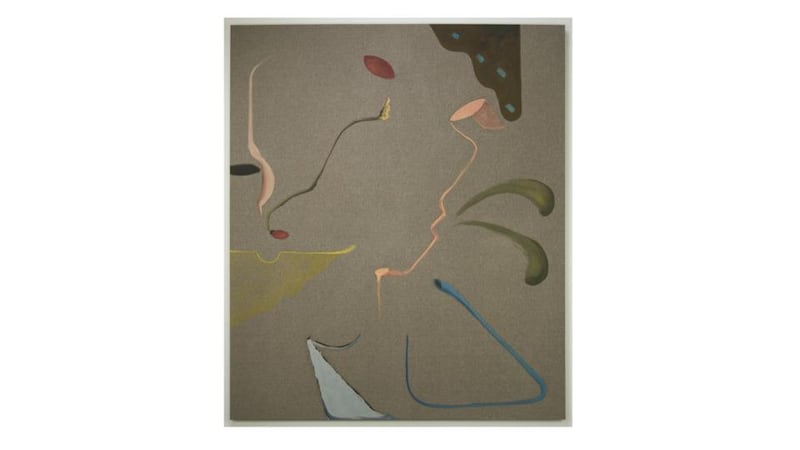The Viewing of Six New Works – Michael Snow
Butler Gallery, The Castle, Kilkenny
★★★★★
The distinguished Canadian artist Michael Snow may not be as well known as some of his contemporaries, but he has probably been more influential in shaping the languages of contemporary art, from experimental film to sculptural installation. His impact extends further than fine art – to arthouse cinema, for example.
He is hard to categorise. You can add painting, drawing, photography and writing to film and sculpture. He also started out as a jazz musician and has never given up music.


Given all that, The Viewing of Six New Works is agreeably straightforward. The experience of looking and the nature of perception have consistently been at the heart of Snow's visual work. In 1967 and 1971 he produced two of the most famous experimental films ever made, Wavelength and La Région Centrale. The former, featuring several performers and set in an apartment, is composed of a series of slow zooms. Implied narrative hints, delivered in elliptical form, are never explained or concluded, but the work was a vital part of a 1960s upheaval in cinematic language.
Wavelength is only 45 minutes, but La Région Centrale is three hours, without the props of performers or narrative. Shot with a camera mounted on an elaborate, custom-made apparatus on a mountaintop in north Quebec, it is as if the film is an exercise in pure seeing: the eye is set free to roam at will, from the ground immediately below to the farthest reaches of the landscape and into the depths of the sky. Time passes, the familiar is turned on its head, becomes completely abstract – and then suddenly comprehensible again.
Fast-forward to 2012 and The Viewing of Six New Works. Snow is still fascinated by the nature and means of seeing. The piece, which is ideally installed in the sequence of rooms that make up the Butler Gallery, is about looking at art and looking generally. Even when examining a static object, the process of looking is itself dynamic, and Snow sets out to capture that dynamism.
Each of the six pieces is keyed to a colour and each is a changing view of a monochrome oblong, in whole or in part, scanned by a restless eye, or more accurately eyes. The forms dance and transform as the watching eyes negotiate them. The eyes are Snow’s, tracked and recorded in the act of looking, in just the way that we might enter a gallery and make our way from painting to painting. Except that in the Butler the process is short-circuited or turned on its head. We end up looking at the process of looking, which is there, pinned down, on the wall.
It may sound austere and minimal, and it is, but it’s also light and playful in tone. That’s true of Snow’s work generally. While it has generated a wealth of theoretical analysis and speculation, it stems from a certain innocence of vision on his part, an ability to ask simple questions and look for simple answers. In doing so, he manages to illuminate things we take for granted, prompting us to really think anew about seeing.
[ butlergallery.comOpens in new window ]
Terra Incognita – Damien Flood
Municipal Gallery, Dún Laoghaire
★★★★
The spare, formal grammar of the paintings in Damien Flood's Terra Incognita, with linear flourishes and enigmatic, sometimes tear-shaped motifs against background expanses, has echoes of the great Joan Miró, though with a quite different palette. Where Miró delights in bold primary colours, Flood's palette tends to be more muted, toned-down and earthy, even though he certainly does use colour, and lots of it. Like Miró, he is dealing in this exhibition with memory. And like Miró, he approaches it in terms of personalised, stylised details, linked to specific images and things, though for the most part not obviously so.
In his work to date he has shown an interest in conceptual bids to understand the world, both orthodox and unorthodox, from philosophical theories to alchemical dreams. His paintings suggest that he is drawn to the essential strangeness that links all such enterprises.
He embarked on this project by asking a question suitably in tune with his previous concerns: What is it to know a place? To find out, he looked to straightforward historical research and one-to-one interviews with residents of the Dún Laoghaire area. The upshot is a sense of a place in terms of the individual, usually unseen and largely unstated histories of those who live there. Flood focuses on precise details culled from the stories he has heard.
Just as important is a sense of the ground of each painting as a context, a generative layer that can incorporate both the physical, topographical precinct and the psychological landscape – the mixture of outer and inner worlds that we each inhabit. The outer gains primacy in Cinder, a reference to a fire that destroyed a church. Captain looks to the harbour and is a contemplation of experience and retirement. Playground indicates the commonality of experience in a lifelong friendship. Once you enter into the spirit of things, it is an engaging show.










